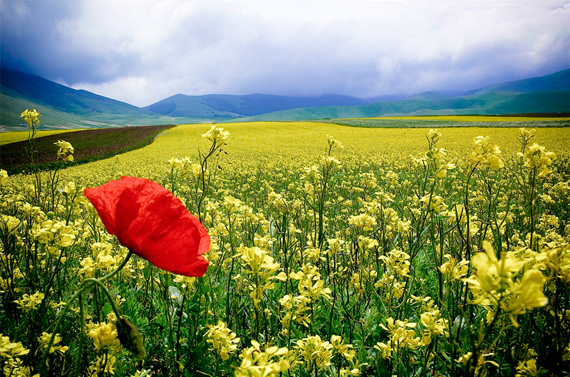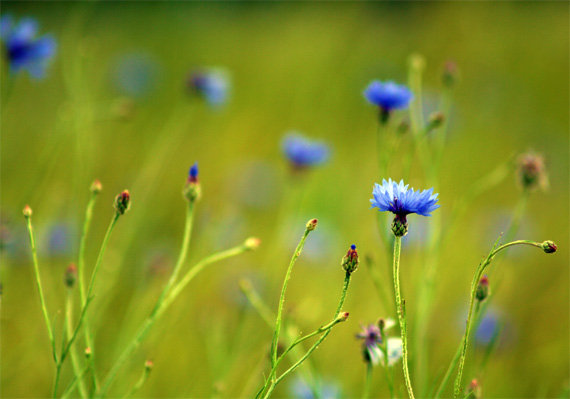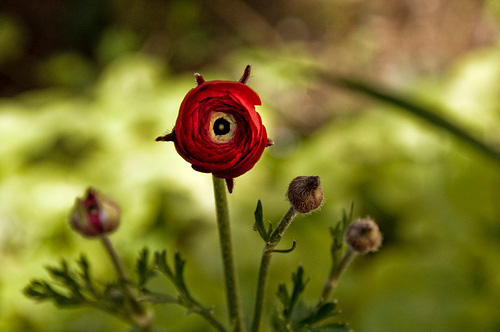Tips For Photographing Flowers
With the advent of digital cameras and the huge amount of features, close-up photography has become the domain for everyone. The simple macro feature on the current generation of digital compacts has opened up this world to virtually anyone with a camera. Of course the ideal situation is the use of SLRs but is not limited to them.One of the first accessories I bought for my film SLR way back in the 1980s was a set of close-up filters that screwed on the end of my lens. This added a new dimension to my photography and I was able to get in really close to my intended subjects, flowers. Although, I did dabble a bit in shooting some of the slower insects and bugs. But flowers were still my focus. Here are some simple tips that will help you shoot better flower photos.
1. Weather conditions and lighting
It is totally useless if you plan to shoot flowers on a day when high wind speeds are predicted. Movement is critical especially when shooting close-ups and your image will be spoiled if you don’t take this into consideration. Lighting is critical as you need to shoot under conditions that enhance colours and allow as much natural light as possible. Unless you’re using a ring flash with a digital SLR you are too close to use the on camera flash system. Never shoot at midday as the lighting is harsh and lacking in contrast.2. Select the right flower
Getting your lighting, exposure and composition perfect and then finding that there are blemishes on the flower’s petals or leaves is a let down. Always inspect the chosen subject before setting up your equipment and make sure that it’s almost perfect.If there are little imperfections, change the angle of view or shoot the opposite site of the flower. You can also remove offending petals and leaves if they do not leave gaps and make the image look imperfect.
3. Check the background
You are limited to how many angles you can shoot from if the flower is in a garden and not a studio. Make sure that the flower or flowers you choose have a background that is simple and uncluttered and enhances the overall quality of the flower image. If it doesn’t, then consider using a piece of card that compliments the dominating colour of your chosen flower. Your focus must be on the flower and a viewer’s eye should be attracted to the flower and not the background.4. Use a tripod
A tripod is essential to flower photography as you need as much light as possible when using a narrow depth of field or focus and if you need a wide aperture the shutter speed is often slower. A slow shutter speed will always be a problem and this limits hand holding due to camera shake.5. Composition
Flower shots always look their best when taken from the side. Shot from above they don’t have same appeal as when taken from the side. Use the rule of thirds placing them in a slightly off centred position and never right in the middle of the image. Getting in closer will always add to the composition. If you are shooting macro you’ll see details that really create an interest.Creating your own indoor studio and shooting picked flowers is a simple process. Use natural light from a window and a simple coloured background and stunning images will result. Be prepared to experiment and practise your techniques.
As with any photography take you time to think before shooting but also to get the composition perfect. Don’t be afraid to vary your angles and work at getting a good focal point. Overall, flower photography is exceptionally rewarding so work at it and create great images.
About the Author
Do you want to learn more about photography in a digital world? I’ve just completed a brand new e-course delivered by e-mail. Download it here for free by clicking here: http://www.21steps2perfectphotos.com/. To learn how you can take your photography from ordinary to outstanding click here – http://www.21steps2perfectphotos.com/21steps.htm.
Wayne Turner has been teaching photography for 25 years and has written three books on photography.




No comments:
Post a Comment